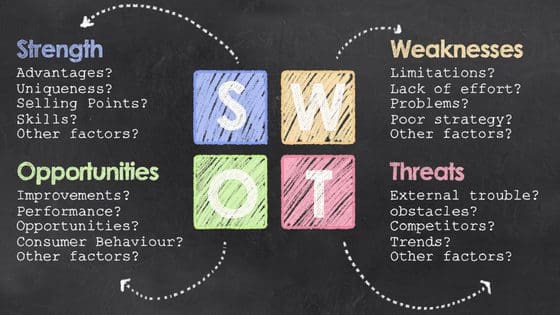Strategic thinking is a crucial skill for any leader looking to take their leadership to the next level. It enables leaders to make better decisions, anticipate challenges and opportunities, and achieve long-term goals. In today’s rapidly changing world, strategic thinking has become more critical than ever as leaders must navigate a complex and uncertain environment.
Developing your strategic thinking skills will not only make you a more successful leader, but it will also improve your personal life. In fact, people who possess skills in strategic thinking have better relationships – and are more creative in their work lives.
In this article, we’ll explore the benefits of strategic thinking in leadership, real-life examples of how it has helped leaders succeed, and the practical steps you can take to develop your strategic thinking skills.
Advantages of strategic thinking in leadership
Leadership is more than just managing day-to-day tasks; it’s about envisioning the future and creating a plan to make it a reality. This is where strategic thinking comes in.
As a strategic leader, you look beyond the present and consider the long-term consequences of your actions. You are able to adapt your plans to changing circumstances and find new solutions to old problems by looking at them from different angles.
You have a holistic view of your organisation’s ecosystem and stakeholders, and therefore, you can anticipate significant market shifts and identify emerging opportunities. Because of this, and you understand that nothing is certain and failure is part of the learning process, you’re not afraid to take risks.
You don’t hesitate to make tough calls to reach your team’s goals. Yet, you inspire people to work towards a vision of what’s possible while acknowledging that there will be setbacks along the way.
And you don’t stand still: you’re constantly moving toward ambitious targets while experimenting with new ideas, making informed bets on what might work best for your situation.
With strategic thinking, you can lead your team to a brighter future.
Real-life examples of strategic thinking
Strategic thinking is a powerful tool for any business leader, and there is an abundance of real-life examples in leadership. Here are some of the most notable:
- Jeff Bezos, the founder of Amazon, is known for his strategic thinking skills, recognising the potential of digital technology to enhance customer experience and implement mobile ordering.
- Oprah Winfrey’s strategic thinking in leadership enabled her to take the Oprah Winfrey brand from television and into new areas such as books, magazines, and digital media.
- Steve Jobs, the co-founder and former CEO of Apple, was known for his ability to anticipate trends and develop products that meet the needs of consumers.
These three examples demonstrate how strategic thinking can help leaders lead their teams to success.
How many others can you think of?

How can you develop your strategic thinking skills?
It should be clear by now that strategic thinking is extremely valuable for progressing your career, but it also has wide application in your personal life. It’s a skill that enables you to plan and apply reason to your challenges, always seeking the best and most effective solution. So how do you develop it?
Like any other skill, strategic thinking can be practised and developed over time. There are multiple opportunities to build our strategic thinking skills in everyday life; we just need to recognise them and grab the opportunity.
Here are some practical steps you can take to do just that:
1. Set aside time for strategic planning
Carve time out of your busy day for strategic planning when you won’t be distracted. Allow yourself time to reflect and consider options in between planning sessions. It’s incredible how often we step away from something only to come up with the best idea or think of something we haven’t thought of previously.
2. Switch up the location
While doing some analysis and planning in the office may be necessary, those four walls can also be restrictive. Consider a change of scenery—for example, an alternative workspace such as a home office or co-working space. Alternatively, you may find that sitting in a coffee shop or taking a walk in the park with merely a notebook and a pen is a great way of helping you to generate ideas.
3. Stay informed
Keeping up to date with industry news is crucial if you’re going to seek out new opportunities ahead of the competition and anticipate market shifts. But be strategic with it.
Set up reading lists and notifications for relevant industry magazines, companies, and people of interest. This way, you’ll sift out irrelevant information, which will only distract you from the task at hand.
4. Analysis, analysis, analysis
Take a step back and look at the big picture rather than getting caught up in the more minor details. Develop the ability to analyse complex problems by breaking them down into smaller parts and looking at them from different perspectives.
The SWOT (strengths, weaknesses, opportunities, and threats) analysis is a great starting point for this.

5. Seek out and listen to others’ perspectives
To ensure you see the big picture, surround yourself with a diverse team and bring them into the process. Seek their views on the possibilities, potential risks and opportunities, and suggestions for moving forward. Encourage your team members to challenge your ideas; doing so will develop your strategic thinking skills by creating an understanding of all sides of an issue.
6. Create a plan
It’s decision time. You’ve done the analysis and considered all the factors and all the possible options for moving forward. Now it’s time to decide what you’re going to do, when and how.
As well as setting clear goals, other critical considerations leaders have are how they will achieve those goals and how success will be measured. They will also need to consider all the potential hurdles to attain the goals and how to overcome them.
7. Be willing to take risks
Leaders need to know when it is appropriate to take risks and when to play it safe. Taking calculated risks can help the company grow, but being too cautious could prevent it from reaching its full potential.
If you’re unsure whether you’re playing it too safe, consider getting feedback from a trusted colleague, coach or mentor.
8. Continuously monitor and adapt the plan
It’s no good filing your plan away and hoping that when you get it out 12 months later, you’ve achieved everything you set out to. It’s essential to continuously monitor and assess progress against any goals and objectives. Depending on that progress, it may be necessary to adapt the plan to address new challenges or opportunities.
9. Share information
Strategic thinking is about understanding the big picture, so keeping all team members in the loop and sharing information across teams is vital. This way, you can better understand the broader organisational strategy and incorporate it into your own plans, as well as learn beyond day-to-day jobs.
The more your team is aware of what’s going on, the more likely they will spot potential opportunities or challenges, which they can share with you.
In summary, strategic thinking is a crucial skill for any leader looking to take their leadership to the next level. It enables leaders to make better decisions, anticipate challenges and opportunities, and achieve long-term goals. By developing their strategic thinking skills, leaders can become more successful in the long run.
If you’d like to discuss how we can help you develop your strategic thinking skills, book a discovery call. We’d love to hear from you.
Published 30th January 2023.




